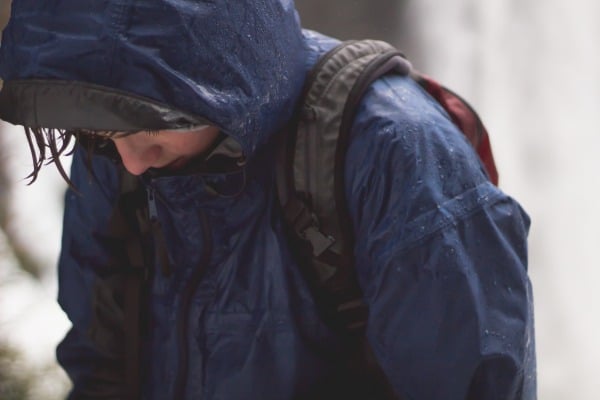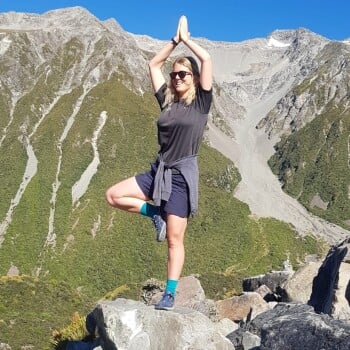- About Us
-
Trips
-
 Kiwi-Style Hiking
Kiwi-Style Hiking
-
 Great Walks
Great Walks
-
 Hiking Tours
Hiking Tours
-
Alpine Hikes
-
Custom Groups
- Huayhuash Trek
- Family Northern Explorer
- Family Southern Explorer
- Lake Waikaremoana Hike
- Women's Custom Tours
- Women's Southern Wilderness
- Coast, Canyons and Mountains
- Coastal Wanderer Custom Tour
- Don't Cross the Ladies
- Secret South Custom Tour
- Tekapo Hike
- West Coast Custom Tour
- World Heritage Custom Tour
-
- Blog
- Shortlist
- About Us
- Trips
- Blog
- Shortlist

Mar 19, 2024
An old Scandinavian proverb tells us “there’s no bad weather, only bad clothing.”
While there are sure to be a few hikers who’ve spent time battling quasi-apocalyptic conditions in Fiordland National Park who might disagree, this sage Nordic adage contains an element of irrefutable wisdom as regards our approach to choosing our togs for hiking.
In short, whatever weather conditions we might encounter on the trail, there a few general clothing rules that will stand us in good stead. In this article, we will introduce you to the most important of them with a short, simple guide designed to cover the fundamentals of optimal hiking attire for rain, shine, sleet, snow, and all the rest of it, too.
Feet First: Boots or Shoes?
The first and perhaps biggest decision we have to make when choosing our clothing and kit for any hike is what to wear on our feet. While opting for the wrong midlayer or undies might lead to a little discomfort, a poor choice of footwear could potentially set us up for a bit of an ordeal, with wet, cold feet, blisters, heel spurs, foot cramps, and leg fatigue potentially awaiting us.

Our choices as regards footwear can be reduced to two broader options: approach shoes or hiking boots. Both of these options have their pros and cons and each is more suitable in certain locations and on certain hikes than on others.
In a few words, hiking boots are the best option for hikes where trail conditions are likely to be boggy and more rugged, or if we are carrying a large pack that requires us to have a little more on the way of ankle support. Approach shoes, on the other hand, offer a much lighter and often more comfortable option that can reduce leg fatigue and are often the best bet on well-maintained trails when conditions are relatively dry.
Use the Layering System
The layering system is a simple, highly effective way of dressing for hiking outings that can be tweaked and tailored to suit all kinds of conditions in all seasons of the year.
Layering involves using a series of thinner layers of clothing as opposed to a single, bulkier layer to provide insulation, fend off the elements, and manage perspiration. Generally used as a three-part system, each layer of clothing creates thin pockets of air which maintain body heat while simultaneously transporting body moisture through to the subsequent layer, thus leaving you drier and warmer than you would be if using a single, beefy and less breathable layer on its lonesome or on top of a baselayer.
In any layering system breathability is crucial and if any one item in the system lacks this attribute then the effectiveness of the system as a whole will be impaired. A reasonable analogy is to compare a non-breathable layer to the methane, carbon dioxide, and other gases responsible for our planet’s ‘greenhouse effect’. Just like our ozone, a thick layer that fails to allow airflow and moisture transmission traps in heat, whereas a series of thinner, breathable layers act as conduits that allow both to be transmitted through the fabric onto the surface of your final layer.
Below, we’ve added a quick description of how each layer functions and a few tips to help you choose garments in each category.
The Baselayer: Moisture Management
The baselayer is all about moisture management. It works by wicking perspiration away from your body onto the subsequent layer in your system, thereby keeping you cool and dry and reducing the chance of hypothermia, which is sodden, non-breathable garments conducting heat away from the body.
The best choices of baselayer are those with excellent breathability and wicking capacities. In most cases, this means garments made with merino wool or technical synthetics such as include Polartec Powerdry, Lifa, Omni-Wick, Capilene, and polyester-polypropylene blends.
The Midlayer: Heat Retention and Insulation
The midlayer, also known as the ‘insulating layer’, works by trapping body heat close to your body. As a general rule, the thicker the layer, the more insulation it will provide, though choosing a bulkier midlayer will, in most cases, also entail a commensurate drop in breathability.
Different types of midlayer offer different qualities and are better suited to certain conditions. The most common types are as follows:
- Fleece: Broadly speaking, fleece midlayers are the cheaper of the available options. They offer a highly breathable, warm, cozy, lightweight layer that is capable of insulating even when wet. The only downside to fleece is that it is less compressible than other midlayer materials.
- Down: Down midlayers are typically much pricier than fleece varieties but offer an outstanding warmth-to-weight ratio. While perhaps overkill for hiking in summer months, they are a great choice for winter or shoulder season hikes. The only downside to down, other than the cost, is its inability to insulate when wet—at least, that is, if it doesn’t happen to be of the recently emerged (and even pricier!) waterproof variety.
- Wool: In recent years brands such as Icebreaker, Smartwool, Mammut, and Isobbaa have complemented their ranges of high-performing merino baselayers with thicker ‘weights’ of garment that offer attractive midlayer alternatives. On the ‘pro’ side, these garments offer excellent wicking and breathability, smell fresh after several days of use, and insulate even when wet. On the ‘con’ side, they are often heavier than fleece garments, cost a lot more, and offer little in the way of wind resistance.
The Shell Layer
The shell or outer layer in a tripartite system is the one that we depend on for protection from the elements—wind, rain, sleet, snow, etc. As with any item in the layering system, however, this layer’s effectiveness also relies on it having an adequate degree of breathability.
Shell layers come in varying forms and with varying attributes and capacities. More generally, the main types of shell layer available can be lumped into two broad categories: water-resistant and waterproof.
Water-resistant shells are usually cheaper models designed to deal with lighter precipitation and less extreme conditions. For the most part, they use a durable water repellent finish (DWR) as opposed to a water-repelling membrane.
Waterproof shells usually cost more than their water-resistant counterparts but in return for the expense offer superior waterproofing in combination with varying—but usually high—levels of breathability thanks to their use of a laminated, waterproof-breathable membrane as opposed to an external hydrophobic coating. The most common varieties on the market at present include Gore-Tex, eVent, H2No, and Pertex Shield.
Avoid Cotton
Cotton garments are to the hiking get-up what naked flames are to combustible gases—in a few words, best avoided!
Unlike technical synthetic materials and some natural fabrics like merino wool and bamboo, cotton is a very poor performer in terms of the qualities we need most from any garment used in athletic activities—breathability and wicking.
Most technical synthetic garments and other natural fabrics allow our sweat to pass through to the subsequent layer and/or evaporate in the ambient air. Cotton, however, has a sponge-like effect and collects moisture in the thousands of tiny tubes called lumens of which it is composed, absorbing up to 27 times its weight in water. Given that water can conduct heat away from the body up to 25 times faster than air, hiking in a wet garment can quickly become a serious problem should conditions change, we start heading downhill, or we stop moving (and, thus, generating heat) for any length of time, and in extreme cases can lead to the onset of hypothermia.
Prepare for the Worst
Too many hikers are apt to choose their threads for any given outing based on the weather forecasts for low-lying locations or towns near where they plan to do their hiking. As we all know, weather forecasting is far from an exact science and the temperatures quoted in the towns or villages where many hiking trails begin will often give a very inaccurate impression of how conditions might be just a few hours after setting off, particularly if your trail involves a lot of ascent. A general the rule of thumb is that temps can drop up to ten degrees centigrade per 1,000 meters of elevation.

As such, it’s always wise to check your optimism and envision the “worst-case scenario” when packing and dressing for your outings—having too much, after all, is far less likely to end in disaster than having too little.
Three-Season Clothing List
- Breathable undies and socks
- Hat/beanie
- Baselayer (technical synthetic or breathable natural fabric)
- Midlayer
- Shell layer jacket
- Shell pants
- Lightweight gloves
- Sunhat
- Pants/shorts/leggings
Seasonal Optionals
- Gaiters
- Thicker midlayer (heavyweight fleece or down jacket)
- Mitts/insulated gloves
- Balaclava
- Neck gaiter/buff
- Technical baselayer pants (merino/synthetic)
- Snow glasses







